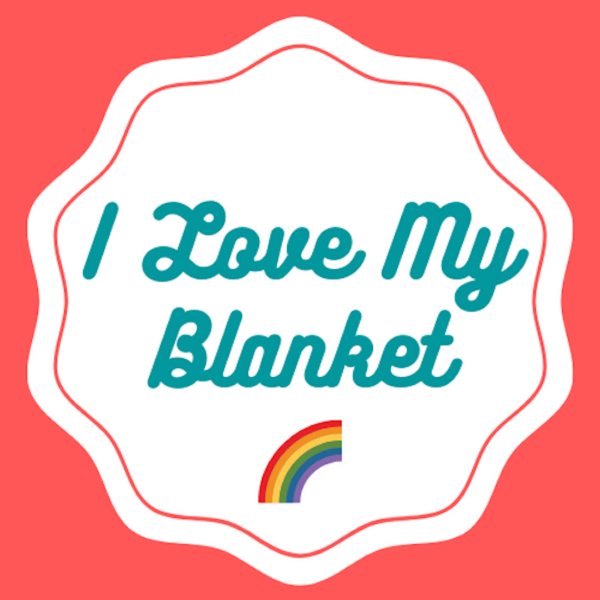
In-person craft shows: A beginner's checklist
Share
As one of many crafters whose business began during a global pandemic, my sales and customer interactions have been almost 100% virtual, and honestly that has worked well for me!
There are many practical reasons why I have been resistant to in-person craft markets (life-threatening viruses aside), including:
- Cost: Gone are the days of cheap or free church bazaars! If those avenues are available to you, I'm envious, but living in an urban centre that has a reputation for high-scale craft markets has really driven up fees, so most of them are inaccessible to me.
- Logistics: As someone who doesn't have a car and has physical disabilities, participating in craft shows is a team affair - I can't participate without a lot of volunteer support.
- Physical Demands: As mentioned, I am disabled, so the physical requirements of a full day of physical and mental work is a lot to commit to.
Having said all that, I recognize the importance of exploring all avenues for sales (can't knock it until you've tried, it, right?) and appreciate that in-person sales present an opportunity to meet, interact and develop relationships with customers that can't necessarily be replicated elsewhere! So I always have my feelers out for potential opportunities to test the market.

Recently, one of the virtual marketplaces where I list my knitted items, had a one-day, in-person craft market for a very low and reasonable fee, and I decided to give it a try. I learned a fair bit in preparing and participating for that market, which I decided to share here.
If you are at the start of your crafting-turned-side hustle journey and are also considering in-person markets, I hope you'll find these tips useful in planning for your first attempt, and that it will also provide you with some realistic expectations for success.
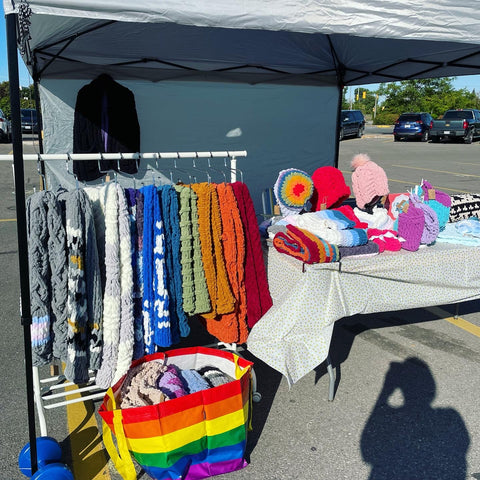
APPLICATION AND FEES
As mentioned above, market participation fees can vary wildly! So your first step is to do some research into what the rates are in your area. Urban cities tend to have higher fees, but may also yield more traffic and greater revenue. Smaller towns may have low fees, but very little traffic. Events with higher fees may also be curated (meaning that the organizer picks a limited number of vendors).
Another important question to ask is, what is included in your fee? Do you need to supply your own table and tent (where applicable)? If tables are supplied, what are the dimensions? What is the size of your space? Are commissions charged on top of (or instead of) fees for each of your items sold? Sometimes each vendor is expected to donate a portion of their sales to a specific charity (if the event is also a fundraiser). These are important questions, because these amounts will impact your bottom line, and could even push your net sales into the negative if your costs exceed revenue.
SUPPLIES
It is a pretty rare thing to be able to just pack your crafts into your car and show up at a market, ready to sell, with no additional supplies or infrastructure. This may work for smaller products at a local flea market that supplies tables for its vendors, but you may still discover that you will benefit from including some of these items.
Taking Payments
Gone are the days of a simple cash economy! These days, customers want and expect payment options. And the move towards a 'cashless' world has meant that vendors are often expected to offer cash, credit, and/or other cashless payment options.
Cash
Which payment options you are expected to offer will depend on the local culture, the average price of your items, and the availability of wi-fi or internet at your market location. It is definitely more common at farmer's markets and when selling smaller items to offer cash payments only. If that is the only option (or one of the options) you choose, you will need a cash float.
A cash float is an amount of money, usually in smaller denominations, that the seller uses to make change. The difference in the amount of money in your float at the end of the sales period, minus the start of the sales period, should match your gross sales revenue.
You also need to decide how you are going to store your float and any cash you receive? This could be as simple as a purse (although depending on the size and style of your purse, you may not find this practical), or you may choose to use a cash box or money belt. Is there a secure area to store a lock box? Or do you feel more comfortable keeping cash on your person?
Keep in mind also, that even if you prefer to go cashless for payments, you may appreciate having cash as a back-up option, because internet access is not always reliable!
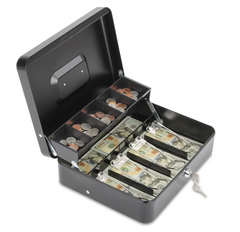
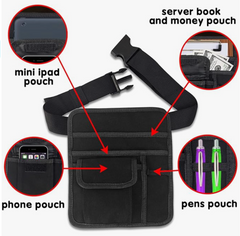
Electronic Transfer
Even before the pandemic, there was a growing trend towards being 'cash free', but certainly the need for social distancing has pushed even more people towards cashless options. Again, whether this is a viable option for you will depend on whether this option is commonly available in your country or jurisdiction, and whether you and your customers have access to wi-fi or the capability to use mobile banking on the spot.
E-transfers can be a quick and easy way to accept payments; although you may want to get a dedicated email account for customers to send payments to, if you don't want to be handing out your personal email to strangers. Other than an email, all you'll need to receive payments is your mobile phone or tablet with wi-fi or data plan. Keep in mind that if you are using data, you could very quickly exceed the data limits of your plan, so be sure to check ahead of time if you need to increase your plan or get a temporary top-up.
PayPal
Using PayPal for cashless payments is a very similar process to e-transfers. Again, whether this is a viable option for you will depend on access to the internet, and how common a payment method this is in your area.
Don't have a PayPal account? Get one now.
Credit Card and Interac Payments
There are many options for receiving credit card or Interac payments as a small vendor these days, and which one will work for you or is suitable for your business will depend on your needs, as well as your current equipment and website provider, and how much connectivity and seamlessness you want between them. The first thing you'll need to accept card payments is a card reader.
A card reader connects with an app on your mobile device, either directly (eg. via audio jack or lightning connector), or through Bluetooth, to allow you to take credit card or Interac payments.
Because my website is powered by Shopify, I wanted to use a card reader that would interface directly with my online store. I chose to purchase one of their card readers which works with their Point-of-Sale app.
Shopify has two options of card readers: The newer Tap & Chip Card Reader (get it here in the U.S. and here in Canada), which works using your phone or tablet's Bluetooth, or their older and much cheaper Swipe Card Reader (only available in Canada), which plugs into your device's audio jack.


I opted for the Swipe, because at $9 CAD (compared to $69 CAD for the Tap & Chip Reader), even with having to buy a $10 adaptor for my iPhone (which has no audio jack), it was still the most cost-effective option for me.
If you sell through Etsy, you may find the Square card reader the most practical, because they have a direct interface (you can find out more about Square by clicking on 'Integrations' in your Etsy Shop Manager).

Square offers a free audio jack card reader (get it here).
There are many more card reader options out there, which you can use with or without software or apps (some, like the Square, will let you upload stock info manually), and there are many third party apps that will help interface card readers with your existing website, but be prepared to pay extra for that service!
Recording Payments and Invoices
If you are using a card reader and/or mobile apps to record your sales, you will generally provide invoices to customers via email. But if you are operating solely with cash, you may want to have a pad of paper invoices handy. Some customers may also just prefer a paper receipt. I bought a small sales order book like this one for this purpose, which you can get at any office supply store or Amazon.
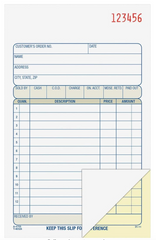
Phone or Tablet Charger
Making a plan to take cashless payments, only to find that your mobile device runs out of juice before the end of your sales day can be both devastating and embarrassing. Even if plugs, outlets and extension cords are supposed to be available at your location, you don't want to plan on that, and show up to find they're all taken! Bringing one or two chargers with you as emergency backup is a good idea.
Tables and Canopies
You will need a table or other surface to display your products, and if the market is outdoors, a canopy. If you're lucky, a table and/or a canopy will be included in your registration fee, but this is rare. I would also recommend asking the organizer if those items may be available for rent, since that may be much cheaper than purchasing them yourself, especially if you expect to get limited usage out of them.


The cheapest option, if you don't already own these, is to borrow them from someone else, which is what I did. My friend's canopy, a 10 x 10 pop-up from Ozark Trail was easy to set up (although I definitely recommend using more than one person). You can find the model I used on walmart.ca here. Pop-up canopies, rather than the kind you have to build or put together, are probably the only practical option for fast set up and take-down.
Canopy Weights
If your market location is on grass, you can affix your canopy using the tent pegs that come with your canopy. However, if you are in a very windy area or the market is in a parking lot or on asphalt or concrete, you'll need tent weights. The market I was at had a mandatory requirement for weights, and although it's an added expense, I did find that it took very little wind to start moving the canopy, so I think it's a good idea.
These don't have to be pretty - exercise weights, bags of sand, bricks, concrete blocks - really anything that is heavy and can be attached to your canopy poles will work. In my case, I didn't have access to any of these options, but found these water weights a great option. I like them because they fold down small for storage, and because water was something I had ready access to for filling.
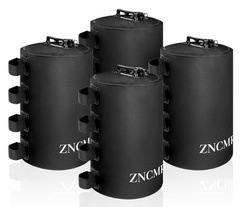
Display Items
Creating a dynamic display for your products, even if you're on a limited budget, will attract more customers and make you look more professional. You probably have items at home (or that you can borrow), that you can use at no added expense, including:
- clothes or laundry racks
- baskets and crates
- hat stands
- wooden or plastic boxes
- plastic bowls
Even Tupperware or Rubbermaid containers, although not the prettiest, can work well for displaying and organizing tiny items. If you do buy display items, it's definitely worth shopping around to get the best prices. Dollar stores are a good option, as well as Amazon or office supply stores. Three items that I found useful were a rolling clothes rack with blanket hangers, and these wig stands for displaying my knitted hats.
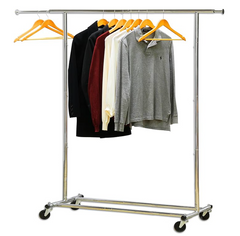


Bags, Tags, and Packaging
Depending on the size and nature of your items, you could forego packaging, but it feels a bit... impolite. At a minimum, reusing grocery bags at least provides your customer with an option to carry their items home, and they may appreciate your thriftiness.
There are plenty of options for packaging, including wrapping paper, plastic or paper bags, and boxes. These items are readily available on Amazon, but if you need to purchase them in large quantities, or are combining your purchase with other storefront-type items (like display cases or signs), consider checking prices with a company that specializes in these things.
In Canada, I purchased my bags and some display items through Eddie's Hang-Up Display. Another good option for Canadian sellers is Uline.
Other Optional Supplies
- Chairs: For some of us, this is a must, not an option! But even if you don't have a folding chair or camp chair, a stool or chair from home will work.
- Tablecloths or table covers
- Tablecloth clips: Be ready for wind (or even just an overzealous customer pulling the edge of your tablecloth by accident!).
- Signs: A sign with your store name and logo is important, but it doesn't need to be a fancy or expensive one for your first market. You can choose to put this expense off until later.
- Mirror: If you sell jewellery or clothing, having a mirror or two on hand for customers is a nice touch.
- Business cards: Markets are good for networking and for those customers who need to 'think about it'.
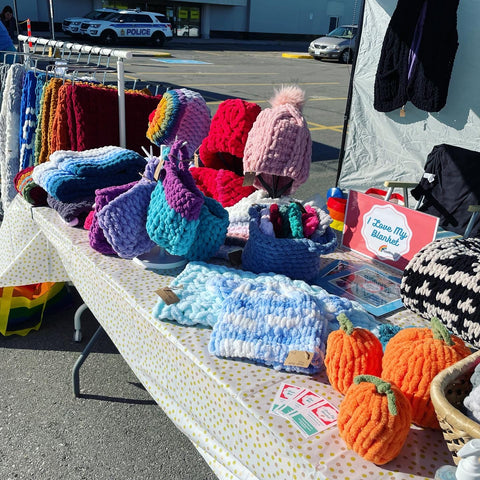
REFLECTIONS FROM MY FIRST IN-PERSON MARKET
In the end, my personal market experience was just.. so-so. I did not make any sales, although I received lots of great feedback and many people took my card and indicated they'd be visiting my online store later. I think there were a few factors influencing this 'failure', and you may want to consider them when deciding if a particular market is the right fit for your store:
- Recognizability: Reputation and trust matter! For the same reason that a customer might be more likely to buy your products on Etsy rather than your stand-alone website, customers may be more likely to buy from vendors they have seen at multiple fairs or shows. As an online business that sells mostly to Americans, expecting to instantly succeed at my first craft market with a completely different subset of customers is possibly unrealistic - it took time to build my reputation online, and it's reasonable to expect the same in-person.
- Location and Marketing: As a one-time Saturday market in a mall parking lot, and with an organizer who seemed to very little marketing, it felt like we had fairly small crowds of shoppers. Again, recognizability and reputation help to draw repeat customers who are coming to buy, not just walk past on their way to elsewhere. Markets that are well-known and consistent yield bigger and better crowds.
- Weather and Unpredictable Factors: We had a beautiful sunny day, and on nice days in late summer, people find other things to do. Including many of the vendors, apparently, because at least a dozen or more vendors simply didn't show up on market day! The organizer tried to move a few vendors around to close the gaps, but I still ended up in a sort of sparse area, at the end of walking traffic. And after a stretch of colder weather, which would have been great for myself (a seller of knitted blankets) and the woman selling winter coats, a sudden hot sunny day was not the ideal backdrop. Some things are beyond your control. Ultimately, I think it was still a bit early in the fall season for my products, so I would probably only try winter markets in the future.
- Price Matters: People are far more likely to make impulse purchases on smaller cost, one-size-fits-all items. One of the reasons why soap and candy makers always seem to sell at markets, in spite of there being a glut of them, is that they are no-risk purchases. People will spend $5-20 without thinking too hard about it, and not lose any sleep over self-doubt about their purchase. Selling items with a higher price tag, or things that need to 'fit' properly, is a higher-risk endeavour. That kind of purchase tends to need a longer period of consideration - a customer might have to walk past your booth several times, or see you at several consecutive markets before they feel confident in their decision. Because of this, you might benefit from a market that has food and entertainment that encourages people to spend longer periods of time at the market. Unfortunately a single appearance at a randomly-scheduled market isn't the best option for that type of exposure.
What has your experience been with in-person craft markets? What worked in your favour, and what would you do differently?

